The previous three ‘Folk & The City’ articles on Madrid[41] listed several places and artists that have defined the traditional and folk music scene in Spain’s capital from the 1960s until the 2010s. This article will present a list of places to find musical instruments in many cases directly linked to the local music traditions.
A Walk in Old Town Madrid
Madrid’s downtown is made up of neighborhoods built in different historical periods. Although the initial human settlements in the area date back to pre-Roman times, the oldest and still visible architectural remains are parts of the walls built by the Arabs around the 9th century. The ancient part of the city is an area that can be walked through from south-west to north-east in a winding route, which will take you through most of old Madrid’s relevant streets (calles), districts (barrios), historical buildings and monuments.
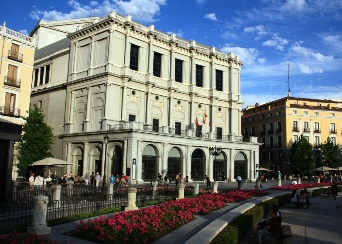
You can start the walk after stepping out of the Metro (Madrid subway) in Puerta de Toledo and then follow an itinerary such as: Calle de Toledo, Basílica de San Francisco El Grande, Parroquia de San Andrés, Plaza Mayor, Mercado de San Miguel, Plaza de la Villa, Calle Arenal, Teatro Real, Plaza de Oriente, Palacio Real, Plaza de España, Templo de Debod, Calle Princesa, Calle de San Bernardo, Gran Vía, Plaza del Callao, Puerta del Sol, Barrio de Lavapiés, Barrio de las Letras, Calle Huertas, Jardín Botánico, Museo del Prado, Plaza de Neptuno, Colección Thyssen, Museo Naval, Plaza de Cibeles, Puerta de Alcalá, Parque del Retiro, Museo Arqueológico, Paseo de Recoletos, Plaza de Colón, Paseo de la Castellana, Barrio de Salamanca, Plaza de Santa Bárbara, …
It can be interesting just to spend a weekend doing that long walk in the old streets, and to check some shops, bars and restaurants along the way. But if you also want to stop to visit museums, palaces, churches and other monuments in detail, the whole tour will easily take more than three or four days. You can find many city guides about Madrid providing very detailed historical and touristic information.
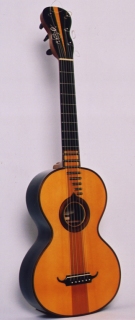
In the first ‘Folk & The City’ article on Madrid,[38] we provided lists of music bars and pubs where you can get a flavour of the local folk and flamenco music scene. This article will concentrate on another aspect related to folk music: Where to find musical instruments, and talking about musical instruments in Spain, guitars are probably the first to come to your mind. Many of the places listed in this article are small historic workshops (for guitars and fiddles) where they manufacture and sell instruments with traditional hand-making techniques. This kind of instruments are normally of significantly higher quality than those others manufactured by means of industrialised processes, and that you normally find in the shops selling all kinds of musical instruments (Let’s not forget that such hand-made quality has also a big effect on the price). In any case, it is just worth to take a look to compare and to learn about these traditional instruments and their makers.
About the Guitar Making Tradition in Madrid
The old ancestors of today’s guitars (for example, the lute) date back to the early Middle Ages and were popular in different places in Europe. Successive versions of such string instruments took names such as: viola da mano (in Italy and Portugal), vihuela (in Spain), Renaissance guitar, Baroque guitar, Classical guitar, Romantic guitar, Neo-Classical guitar, ...
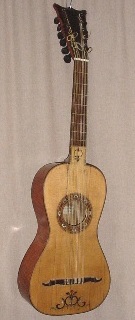
The tradition for plucked string instrument making in Spain was very strong in Andalusia (S-Spain) since before the 16th century. In 1561, King Phillip II chose the small village of Madrid as Spain’s geographical centre point, and the area to resettle the royal court. Therefore, the population in that new capital city of Spain progressively grew in the following centuries. Same as other fine artists (painters, musicians, writers, ...), musical instrument makers (luthiers) also started to become relevant in that raising political and social centre of the country.
According to the web page of the former Association of Guitar Makers of Madrid (Asociación de Guitarreros de Madrid), the earliest ‘guitarrero’ (guitar luthier in Spanish) that they identify is the 17th century Juan de Carrión, followed by Marcos Antonio González (18th century). The list of Madrid’s guitar luthiers shows up to fifteen different names thru the 19th and early 20th century.
It is important to highlight that towards the end of the 19th century a key evolution took place in the design of the guitars in Spain, which until that date were keeping the shapes of the Romantic guitars also common in the rest of Europe . The Andalusian guitarrero Antonio De Torres – Jurado (Almería, 1817-1892) redefined the geometry of the instrument by widening the frontal shapes (including the fingerboard), and he also re-positioned the tone braces that are glued on the back side of the soundboard, with a sort of ‘fan’ arrangement, instead of the ‘ladder-bracing’ that was the most common across Europe until then. All that improved significantly the volume of the guitar sound, as well as relevance of the bass notes, and also facilitated the fingering with the left hand. Those new geometries of Spanish guitar started to become progressively adopted by guitar makers even from other places in Europe, and at the end became one of the most accepted patterns of the classical guitars until today.
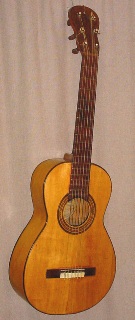
There were also 18th and 19th century guitarreros in Madrid that were incorporating some effective innovations in the construction of their instruments, such as: Marcos Antonio González, Manuel & Juan Muñoa, Dionisio Aguado, Juan Moreno, ... One of those luthiers to start in Madrid the trend of making guitars incorporating modern design features (some of them probably from Torres) was the Galician engineer and inventor Francisco González (Ourense, 1820 – Madrid, 1879). He arrived in Madrid in 1836 where he established his workshop (guitarrería) that became very influential in the later development of the local guitar making history of the city. That shop is where José Ramírez – Planell (Madrid, 1858-1923) started working as an apprentice until he mastered all the techniques for guitar making, and he established his own shop in 1882.
José Ramírez I started then a long family dynasty of great guitar makers that has lasted strongly until today in 2011. His shop has become also the learning place for most of the guitar makers in Madrid along the 20th century. This is why Francisco González and José Ramírez I are usually considered the master founders of the latest guitar making School of Madrid (Escuela de Madrid).
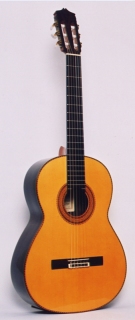
José Ramírez I taught guitar making to his brother Manuel-Felipe and his son, José Ramírez II (1885-1957) who spent part of his life in Buenos Aires (Argentina) until he came back to Madrid to take over the family business at the death of his father in 1923. The dynasty was then followed by José Ramírez III (1922-1995), who not only became a great guitar researcher and maker, but he was also the teacher for most of the guitar makers in Madrid in the last half of the 20th century, such as: Paulino Bernabé, Felix Manzanero, Manuel Contreras, Manuel Rodriguez, Ignacio M. Rozas, Manuel Cáceres, Miguel Malo Martínez, José Romero, and José Ramírez IV, to name but a few. José Ramírez III is also generally credited with the introduction of cedar as a tone wood, due to the shortage of German spruce during the 1960s.
The other branch of the Ramírez guitar making school is the one developed by Manuel-Felipe (José Ramírez I’s brother), who established his own shop in 1897. Manuel developed great guitar building techniques following the design principles from Torres. He also trained great luthiers such as: Enrique García, Santos Hernández, Modesto Borreguero, and Domingo Esteso. For some people, the qualities of the guitars developed by this ‘Manuel Ramírez branch’ are even superior to those of the main one of José I, II, III.
Domingo Esteso established his own shop in 1917, where he was joined by his nephew, Faustino Conde. The successors of Faustino Conde and his brothers (Mariano & Julio), have also given continuity to an important part of the Madrid school, and their descendants have established a number of different shops related to guitar making and selling.
To find more information about the history of guitar making in Madrid and in Spain in general, here are a few interesting links in internet:
Guitarreros, Luthiers & Music Shops
Acoustic or classical guitar making has been and still is (today in 2011) one of Madrid’s most rooted music traditions, closely related to Spanish traditional, flamenco and classical music. The local traditional guitar makers are also normally dedicated to the construction of other plucked string instruments, such as bandurrias. The bandurria is a plectrum plucked chordophone, similar to the cittern and the mandolin, primarily used in Spanish folk music.
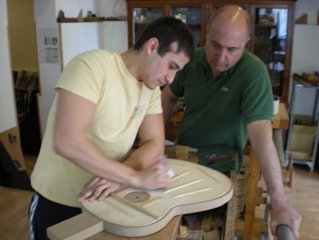
There have always been quite a few luthiers in Madrid for bowed instruments such as violins, violas or cellos, that have learned their techniques in a number of recognized places in Italy or France, but we should not talk about any consolidated local school or tradition in the city. On the other hand, it is interesting to remark that Madrid’s Palacio Real (Royal Palace) keeps on display one of the world’s two largest collections of fiddles from Antonio Stradivari known as ‘Stradivarius Palatinos’: three violins, a viola and two cellos, that were procured by the Spanish royal family along the 18th century.
Regarding wind instruments, there does not seem to be any maker today in downtown Madrid. Conventional wood and brass wind instruments can be easily found in general music shops.
There are also a few places specialized in percussion instruments, modern but also traditional: Spanish, African, Irish, Caribbean, Brazilian, …
The following list summarizes the main places that are worth visiting if you are interested in Spanish guitars, violins, other kinds of acoustic musical instruments, or just CDs and music books. The list of places is more or less in order according to that ‘west-to-east’ path proposed above in this article. This is written in 2011, so it might happen that some of the shops mentioned here disappear in the coming years, as unfortunately has happened with several other traditional family businesses of this kind, when the owners retire and have no continuity with other disciples.
-1-
ARS ANTIQVA
José Ángel ESPEJO
Calle Ronda de Toledo, 1
Mercado Puerta de Toledo, Local 3314
28005 Madrid
www.ars-antiqva.com
• Viol & Guitar maker
• Old Music: Instruments (wind & string), books, CDs, ….
• This shop will probably be relocated in 2011 to some other place in the same district
-2-
FELIX MANAZANERO – CABRERA
Calle Santa Ana, 12
28005 Madrid
www.guitarrasmanzanero.com
www.zavaletas-guitarras.com
• Guitar maker
-3-
MANUEL CONTRERAS
Calle Mayor, 80
28013 Madrid
www.manuelcontreras.com
• Guitar maker
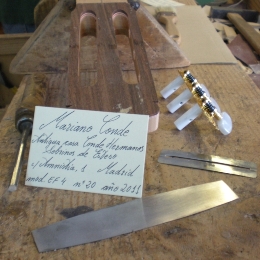
-4-
EL LUTHIER DE OPERA
Carlos MORENO
Calle Espejo, 2
28013 Madrid
www.luthieropera.com
• Violin, Viol, Cello maker
-5-
MUNDIMUSICA GARIJO
Calle Espejo, 4
28013 Madrid
www.mundimusica.es
• All kinds of musical instruments
• Distributor of Salvi harps in Spain
• Violin and other instruments repair shop
-6-
MARIANO CONDE ( Antigua Conde Hermanos, Sobrinos de Esteso )
Calle Amnistía, 1
28013 Madrid
www.facebook.com
• Guitar maker
-7-
MUSICAL OPERA
Calle Carlos III, 1
28013 Madrid
www.musicalopera.es
• One of the largest music shops in Madrid
• All kinds of instruments, books, ....
-8-
CONDE HERMANOS
Felipe CONDE
Calle Arrieta, 4, Bajo Izquierda
28013 Madrid
www.condehermanos.com
• Guitar makers
-9-
HAZEN
Calle Arrieta, 8
28013 Madrid
www.hazen.es
• One of the largest and oldest shops for musical instruments in Madrid
• Founded in 1814 by the Dutch harp and piano maker Juan Hazen Hosseschrueders
• Today they are distributors in Spain for Steinway & Sons and Yamaha
-10-
JUAN ANTONIO MANCHEÑO SANCHEZ
Calle Fomento, 18
28013 Madrid
• Violin, Viola, Cello luthier
-11-
MUSICAL PRINCESA
Calle Martín de los Heros, 17
20008 Madrid
www.musicalprincesa.com
• All kinds of musical instruments
-12-
ESTEBARAN
Calle San Bernardino, 13
28015 Madrid
www.acordeones.net
• Accordions: sale & repair shop
-13-
ANGEL DE BENITO – AGUADO
Calle Monteleón, 14 (intersection with calle Divino Pastor)
28010 Madrid
www.angelbenitoaguado.com
www.zavaletas-guitarras.com
• Guitar maker
-14-
FERNANDO SOLAR
Calle Divino Pastor, 24
28004 Madrid
www.fernandosolar.es
• Violin luthier
-15-
HERMANOS CONDE ( Faustino )
Calle Gravina, 7
28004 Madrid
• Guitar shop
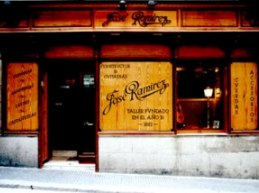
-16-
TOTAL PERCUSION
Calle Valverde, 8
28004 Madrid
www.totalpercusion.es
• Percussion instruments
-17-
CASA DEL LIBRO
Calle Gran Vía, 29
28013 Madrid
www.casadellibro.com
• Books and records
-18-
FNAC CALLAO
Calle Preciados, 28
28013 Madrid
tiendas.fnac.es/callao
• Department store: records, books, musical instruments,…
-19-
MANUEL CACERES – PIZARRO
Calle Jardines, 14
28013 Madrid
• Guitar maker
-20-
UNION MUSICAL - ADAGIO
Carrera de San Jerónimo, 26
28014 Madrid
www.unionmusical.es
• All kinds of musical instruments
-21-
JOSE ROMERO
Calle Espoz y Mina, 30
28012 Madrid
www.joseromeroluthier.com
www.zavaletas-guitarras.com
• Guitar maker
-22-
GUITARRAS JOSE RAMIREZ
Calle de La Paz, 8
28012 Madrid
www.guitarrasramirez.com
• Guitar makers
-23-
CONDE HERMANOS ( Sobrinos de Esteso )
Julio CONDE
Calle Atocha, 53
28012 Madrid
www.conde-hermanos.com
www.zavaletas-guitarras.com
• Guitar maker
-24-
MASSIMO MURA
Calle del Olivar, 30
28012 Madrid
www.massimomura.com
• Violin luthier
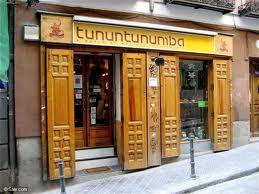
-25-
PERCUSION CAMPOS
Calle del Olivar, 36
28012 Madrid
www.percusioncampos.com
• Percussion instruments
-26-
CAMARADA CAMARON
Calle del Olivar, 44
28012 Madrid
www.myspace.com/camaradacamaron
• Percussion instruments
-27-
PEDRO DE MIGUEL
Calle Amor de Dios 13
28014 Madrid
www.guitarraspedrodemiguel.com
www.zavaletas-guitarras.com
• Guitar makers
-28-
TUNUNTUNUMBA
Calle Santa María, 34
28014 Madrid
www.tununtunumba.com
• The only shop in Madrid truly specialised in traditional musical instruments from all over the world
-29-
GUITARRAS JUAN ALVAREZ
Juan Miguel ALVAREZ DEL OLMO
Calle San Pedro, 7
28014 Madrid
www.guitarrasjuanalvarez.com
www.zavaletas-guitarras.com
• Guitar maker
• See interview with Juan Miguel ALVAREZ in this FolkWorld issue
-30-
AGUSTÍN CLEMENTE & VICTORIA DE FRANCISCO
Calle Claudio Coello, 88
28001 Madrid
www.agustinclemente.com
• Violin luthiers
-31-
LURENT LÓPEZ
Calle Maldonado, 38, 1º-D
28006 Madrid
www.laurentlopez.com
• Violin luthier
About other Instrument Makers in Madrid
Besides the guitar, violin and percussion makers presented in the attached list, downtown Madrid does not offer up to now too many more options for hand-made instruments, except for a few guitar and wind instrument makers located outside the city’s old town, that are delivering their products mostly through internet web pages, such as: Santos BAYÓN, Paulino BERNABE, Arturo SANZANO, Marcelino LÓPEZ-NIETO, Teodoro PEREZ, Manuel RODRIGUEZ & Sons, etc.
There are also several other shops specialized in electric guitars, but they do not belong to the kind of acoustic traditional instruments that we intend to cover in this article. You can easily find them in Google, Madrid Yellow Pages, etc.
There is another interesting group of makers that have specialized in more ‘unfrequent’ traditional, folk, ‘Celtic’,... style of musical instruments. In most cases, they have chosen to live and work outside the city centre, even in the mountains of the Sierra de Guadarrama, about an hour drive to the north of Madrid. These are for example:
-32-
ARPA,
Carlos ARAGÓN & Juan Manuel PARRADO
www.ar-pa.com
• Irish pipes & other woodwinds
-33-
VICTOR BARRAL
www.victorbarral.com
• Irish bodhrans & other traditional percussion instruments
-34-
ANTONIO GAMEZ
www.percusiongamez.com
• North African percussion instruments
-35-
JESUS REOLID
www.zanfona.com
ret007ei.eresmas.net/reolid/
• Hurdy gurdies & other string instruments
We will dedicate a series of articles in following issues of FolkWorld to know more about these other makers and their instruments.
My gratitude to the guitar makers: Juan Miguel ALVAREZ DEL OLMO, Arcángel FERNÁNDEZ – MATA, Manuel CÁCERES – PIZARRO and Mariano CONDE, for their expert advise for this article.
Photo Credits: (1) Teatro Real, Madrid, Spain, Built 1850; (2) Romantic Guitar, Maker: Juan ÁLVAREZ, Madrid, 20th Century; (3) Spanish Guitar, Maker: Lorenzo ALONSO, Madrid, 1785, Colección Felix MANZANERO; (4) Spanish Guitar, Maker: Francisco GONZÁLEZ, Madrid, 1875, Colección Felix MANZANERO; (5) Classical Guitar, Maker: Juan ÁLVAREZ, Madrid, 20th Century; (6) Mariano CONDE & Son, Calle Amnistía, 1, Madrid 2011; (7) M. CONDE Hand-made label, Madrid 2011; (8) GUITARRAS JOSE RAMIREZ; (9) TUNUNTUNUMBA.